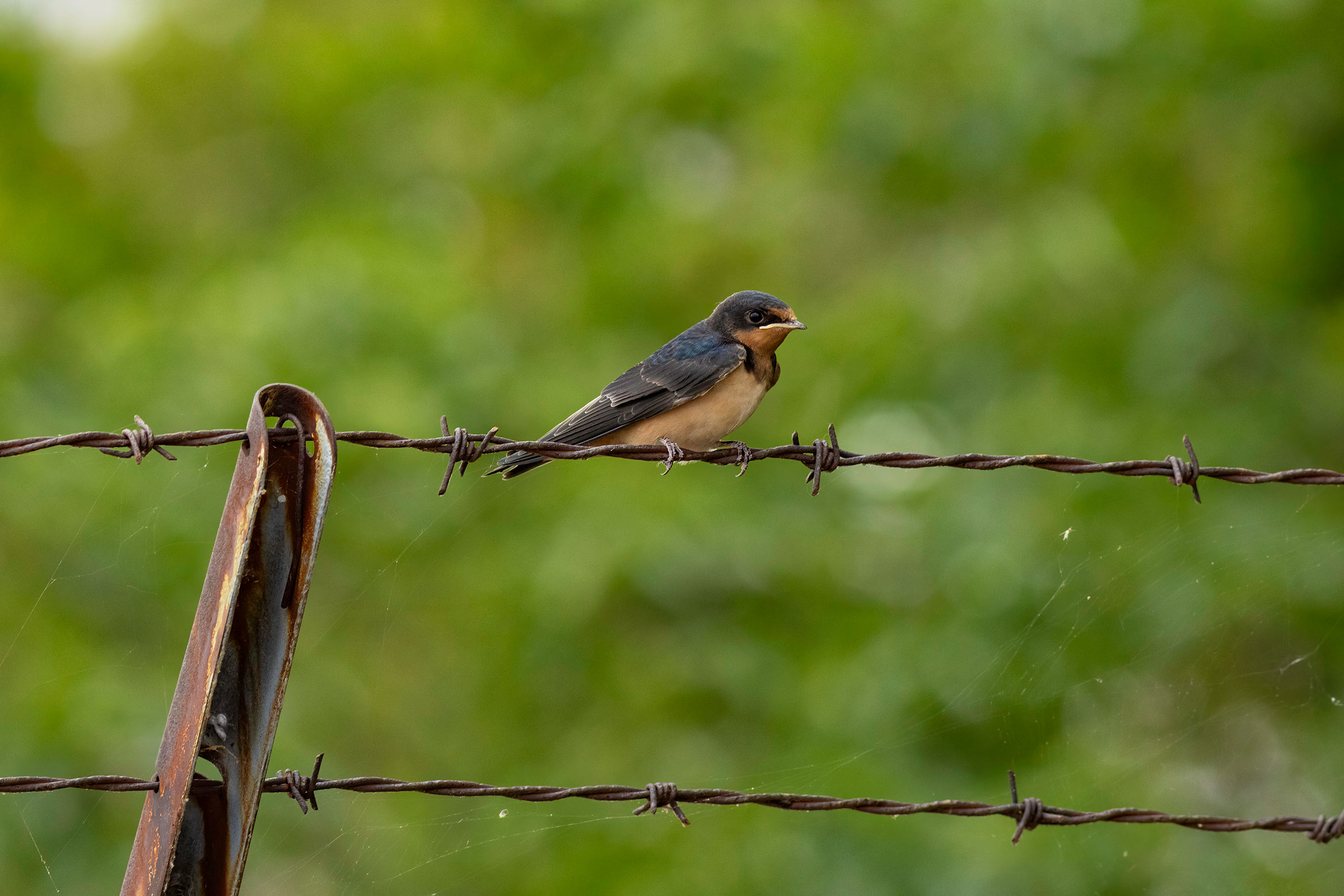Introduction
One of the most widespread bird species globally, the Barn Swallow is a common and recognizable sight throughout Virginia’s countryside. Its forked tail and habit of swooping near, and even in and out of, farm buildings, are well-known. Barn Swallows nest on eaves, rafters, and cross beams of barns, sheds, stables, and other outbuildings (Brown and Brown 2020). Interestingly, this swallow used to nest in caves prior to European settlement, but very few naturally occurring nests are documented today (Brown and Brown 2020).
Breeding Distribution
Barn Swallows are relatively evenly distributed throughout the regions of Virginia (Figure 1). Only heavily forested landscapes, such as those in the Mountains and Valleys region, have a lower likelihood of Barn Swallow occurrence. Barn Swallow’s predicted occurrence in a block is slightly positively associated with agricultural cover.
Between Atlases (Figures 1 and 2), Barn Swallow likelihood of occurrence remained constant throughout almost all of Virginia (Figure 3). However, there was a possible small area of decrease in Buchanan and Dickenson Counties in the Cumberland Mountains region.

Figure 1: Barn Swallow breeding distribution based on probability of occurrence (Second Atlas, 2016–2020). This map indicates the probability that this species will occur in an Atlas block (an approximately 10 mi2 [26 km2] survey unit) based on environmental (including habitat) factors and after adjusting for the probability of detection (variation in survey effort among blocks).
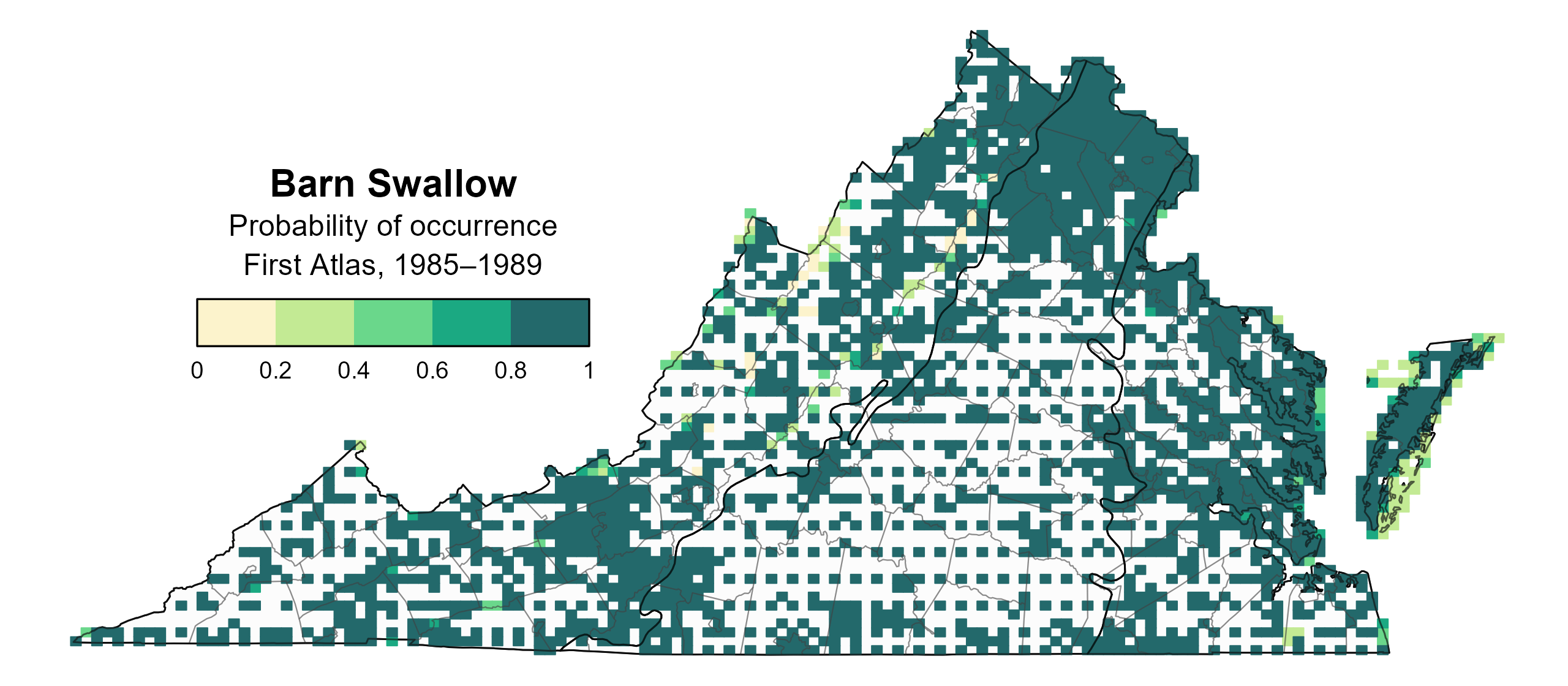
Figure 2: Barn Swallow breeding distribution based on probability of occurrence (First Atlas, 1985–1989). This map indicates the probability that this species will occur in an Atlas block (an approximately 10 mi2 [26 km2] survey unit) based on environmental (including habitat) factors and after adjusting for the probability of detection (variation in survey effort among blocks). Blocks in white were not surveyed during the First Atlas and were not modeled.

Figure 3: Barn Swallow change in breeding distribution between Atlases (1985–1989 and 2016–2020) based on probability of occurrence. This map indicates the change in the probability that this species will occur in a block (an approximately 10 mi2 [26 km2] survey unit) between Atlas periods. Blocks with no change (tan) may have constant presence or constant absence. Blocks in white were not surveyed during the First Atlas and were not modeled.
Breeding Evidence
Barn Swallows were confirmed breeders in 1,061 blocks and 122 counties and found to be probable breeders in four additional counties (Figure 4). The distribution of breeding observations remained generally similar between the First and Second Atlases (Figures 4 and 5).
The earliest confirmed breeding behavior was documented in April when adults were seen carrying nesting material (April 13 – July 15) and building nests (April 14 – June 30) (Figure 6). Breeding continued to be documented until the end of August when occupied nests (April 16 – August 18) and nests with young (April 26 – August 20) were observed (Figure 6). Almost all other breeding behaviors, except distraction display, were also used to confirm breeding.
For more general information on the breeding habits of this species, please refer to All About Birds.
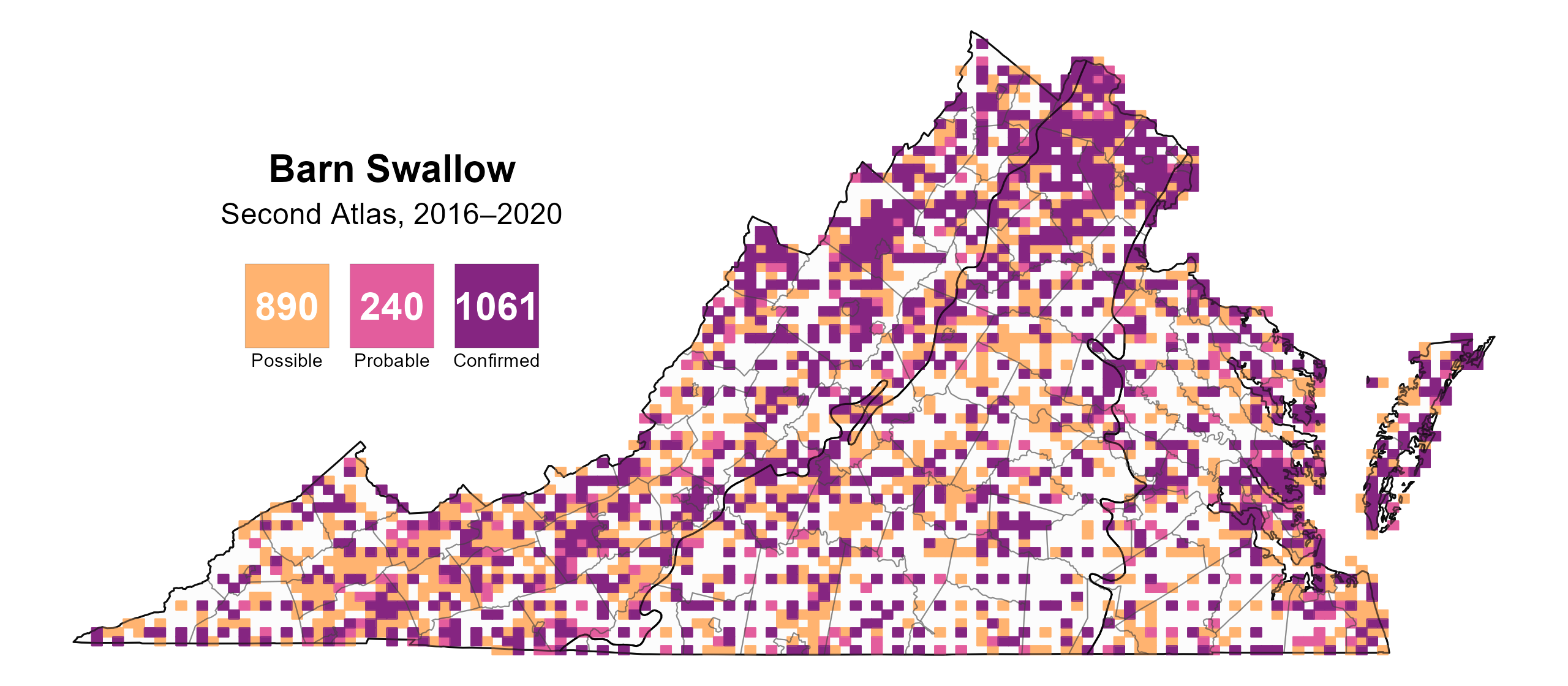
Figure 4: Barn Swallow breeding observations from the Second Atlas (2016–2020). The colored boxes illustrate Atlas blocks (approximately 10 mi2 [26 km2] survey units) where the species was detected. The colors show the highest breeding category recorded in a block. The numbers within the colors in the legend correspond to the number of blocks with that breeding evidence category.
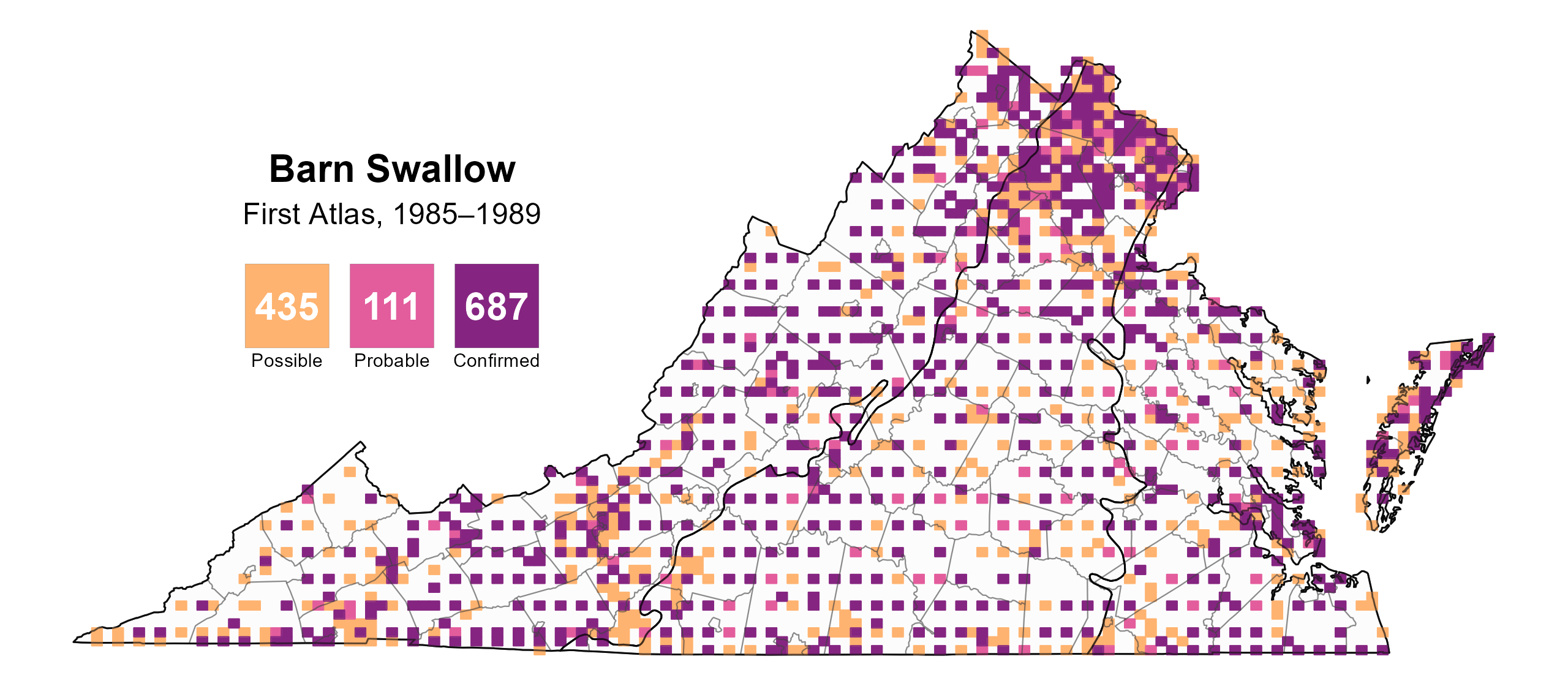
Figure 5: Barn Swallow breeding observations from the First Atlas (1985–1989). The colored boxes illustrate Atlas blocks (approximately 10 mi2 [26 km2] survey units) where the species was detected. The colors show the highest breeding category recorded in a block. The numbers within the colors in the legend correspond to the number of blocks with that breeding evidence category.
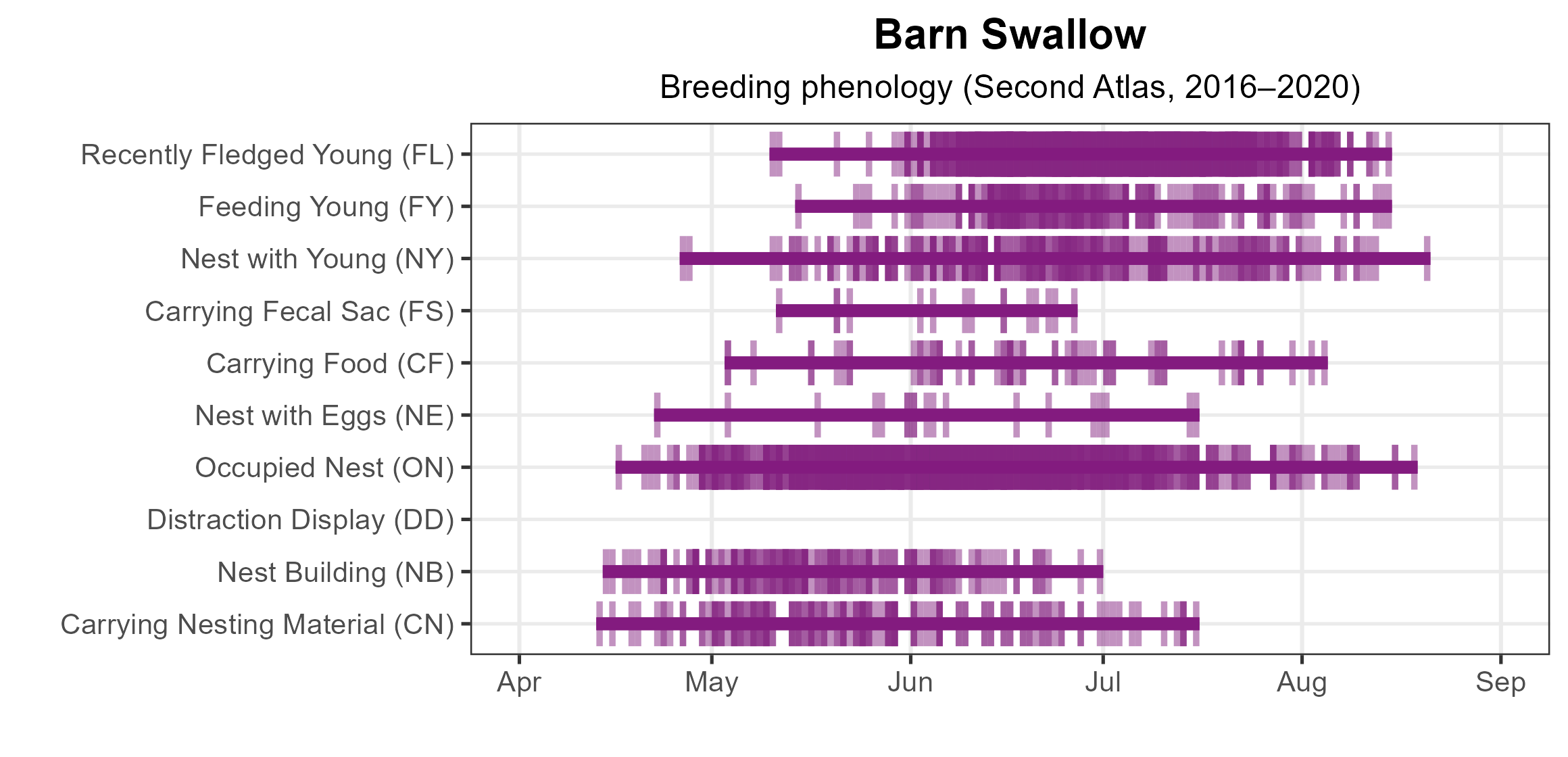
Figure 6: Barn Swallow phenology: confirmed breeding codes. This graph shows a timeline of confirmed breeding behaviors. Tick marks represent individual observations of the behavior.
Population Status
Barn Swallow relative abundance was estimated to be highest and most widespread in the rural farming valleys of the Mountains and Valleys region, in the northwestern Piedmont region, in the southeastern Coastal Plain region, and on the Eastern Shore, where Barn Swallows nest on bridges and piers (Figure 7).
The total estimated Barn Swallow population in the state is approximately 648,000 individuals (with a range between 474,000 and 886,000). Based on the North American Breeding Bird Survey (BBS), the Barn Swallow population declined by a nonsignificant 0.23% annually from 1966–2022 in Virginia, and between Atlas periods, Barn Swallows decreased by a nonsignificant rate of 0.48% per year from 1987–2018 (Hostetler et al. 2023; Figure 8).

Figure 7: Barn Swallow relative abundance (Second Atlas, 2016–2020). This map indicates the predicted abundance of this species at a 0.4 mi2 (1 km2) scale based on environmental (including habitat) factors. Abundance values are presented on a relative scale of low to high.
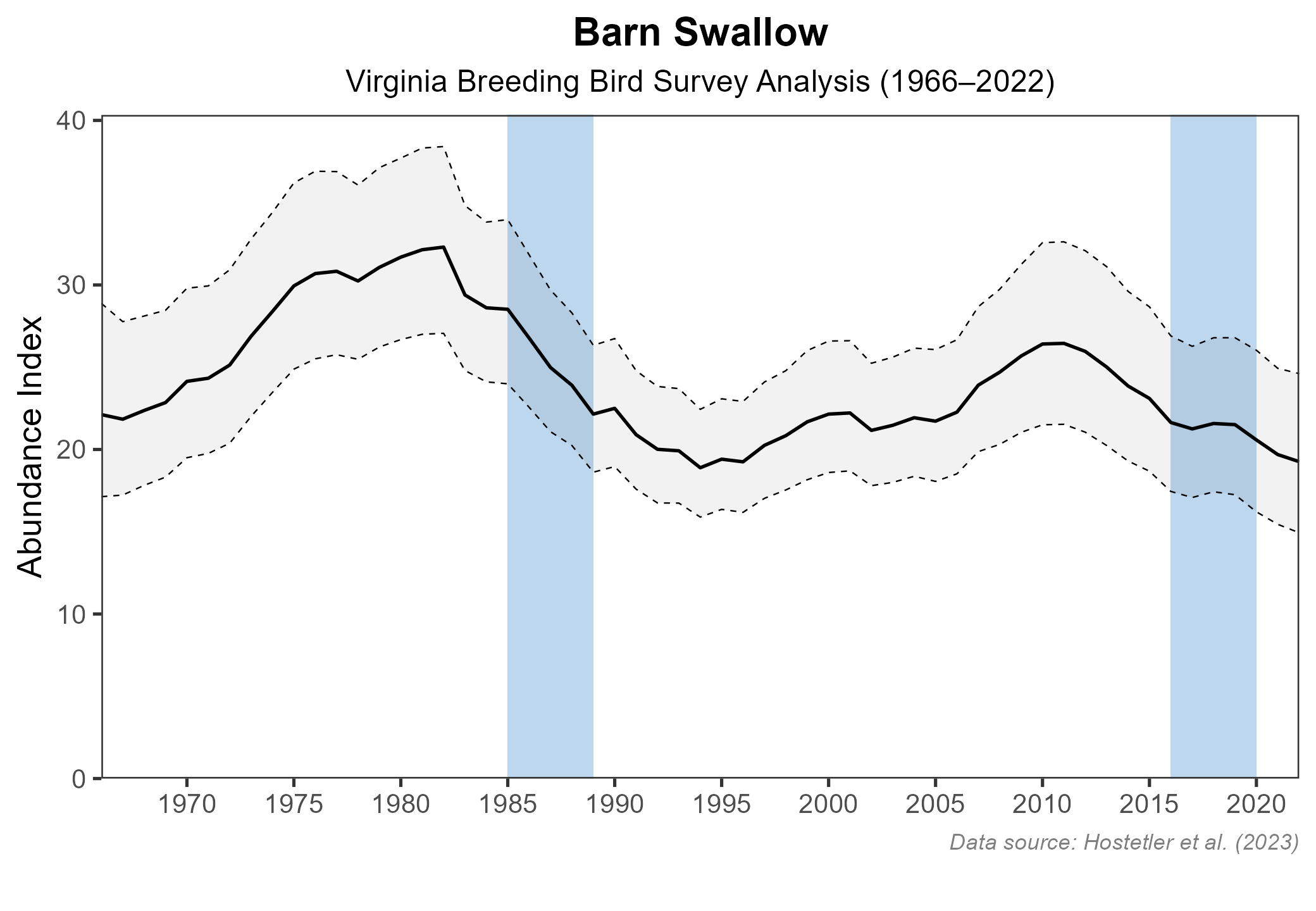
Figure 8: Barn Swallow population trend for Virginia as estimated by the North American Breeding Bird Survey. The vertical axis shows species abundance; the horizontal axis shows the year. The solid line indicates the estimated population trend; there is a 97.5% probability that the true population trend falls between the dashed lines. The shaded bars indicate the First and Second Atlas periods.
Conservation
Although the Barn Swallow has experienced some declines in parts of its range, it is a common and widespread species in Virginia and is not considered a species of conservation concern (Brown and Brown 2020). In addition, there are no dedicated conservation projects underway for Barn Swallows in the state.
Interactive Map
The interactive map contains up to six Atlas layers (probability of occurrence for the First and Second Atlases, change in probability of occurrence between Atlases, breeding evidence for the First and Second Atlases, and abundance for the Second Atlas) that can be viewed one at a time. To view an Atlas map layer, mouse over the layer box in the upper left. County lines and physiographic regional boundaries (Mountains and Valleys, Piedmont, and Coastal Plain) can be turned on and off by checking or unchecking the box below the layer box. Within the map window, users can hover on a block to see its value for each layer and pan and zoom to see roads, towns, and other features of interest that are visible beneath a selected layer.
View Interactive Map in Full Screen
References
Brown, M. B., and C. R. Brown (2020). Barn Swallow (Hirundo rustica), version 1.0. In Birds of the World (P. G. Rodewald, Editor). Cornell Lab of Ornithology, Ithaca, NY, USA. https://doi.org/10.2173/bow.barswa.01.
Hostetler, J. A., J. R. Sauer, J. E. Hines, D. Ziolkowski, and M. Lutmerding (2023). The North American breeding bird survey, analysis results 1966 – 2022. U.S. Geological Survey, Laurel, MD, USA. https://doi.org/10.5066/P9SC7T11.





